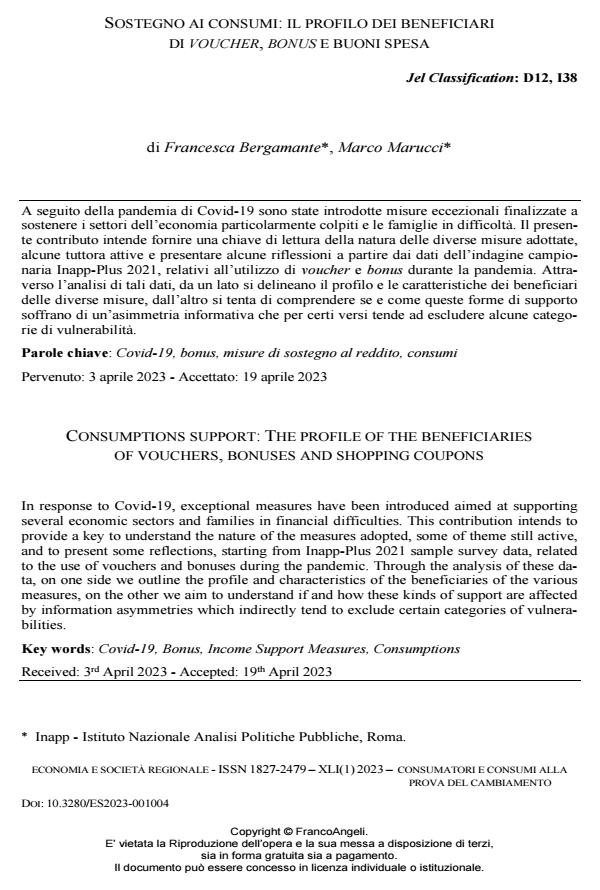Consumptions support: The profile of the beneficiaries of vouchers, bonuses and shopping coupons
Journal title ECONOMIA E SOCIETÀ REGIONALE
Author/s Francesca Bergamante, Marco Marucci
Publishing Year 2023 Issue 2023/1
Language Italian Pages 14 P. 39-52 File size 297 KB
DOI 10.3280/ES2023-001004
DOI is like a bar code for intellectual property: to have more infomation
click here
Below, you can see the article first page
If you want to buy this article in PDF format, you can do it, following the instructions to buy download credits

FrancoAngeli is member of Publishers International Linking Association, Inc (PILA), a not-for-profit association which run the CrossRef service enabling links to and from online scholarly content.
In response to Covid-19, exceptional measures have been introduced aimed at supporting several economic sectors and families in financial difficulties. This contribution intends to provide a key to understand the nature of the measures adopted, some of theme still active, and to present some reflections, starting from Inapp-Plus 2021 sample survey data, related to the use of vouchers and bonuses during the pandemic. Through the analysis of these da- ta, on one side we outline the profile and characteristics of the beneficiaries of the various measures, on the other we aim to understand if and how these kinds of support are affected by information asymmetries which indirectly tend to exclude certain categories of vulnera- bilities.
Keywords: Covid-19, Bonus, Income Support Measures, Consumptions
Jel codes: D12, I38
Francesca Bergamante, Marco Marucci, Sostegno ai consumi: il profilo dei beneficiari di voucher, bonus e buoni spesa in "ECONOMIA E SOCIETÀ REGIONALE " 1/2023, pp 39-52, DOI: 10.3280/ES2023-001004